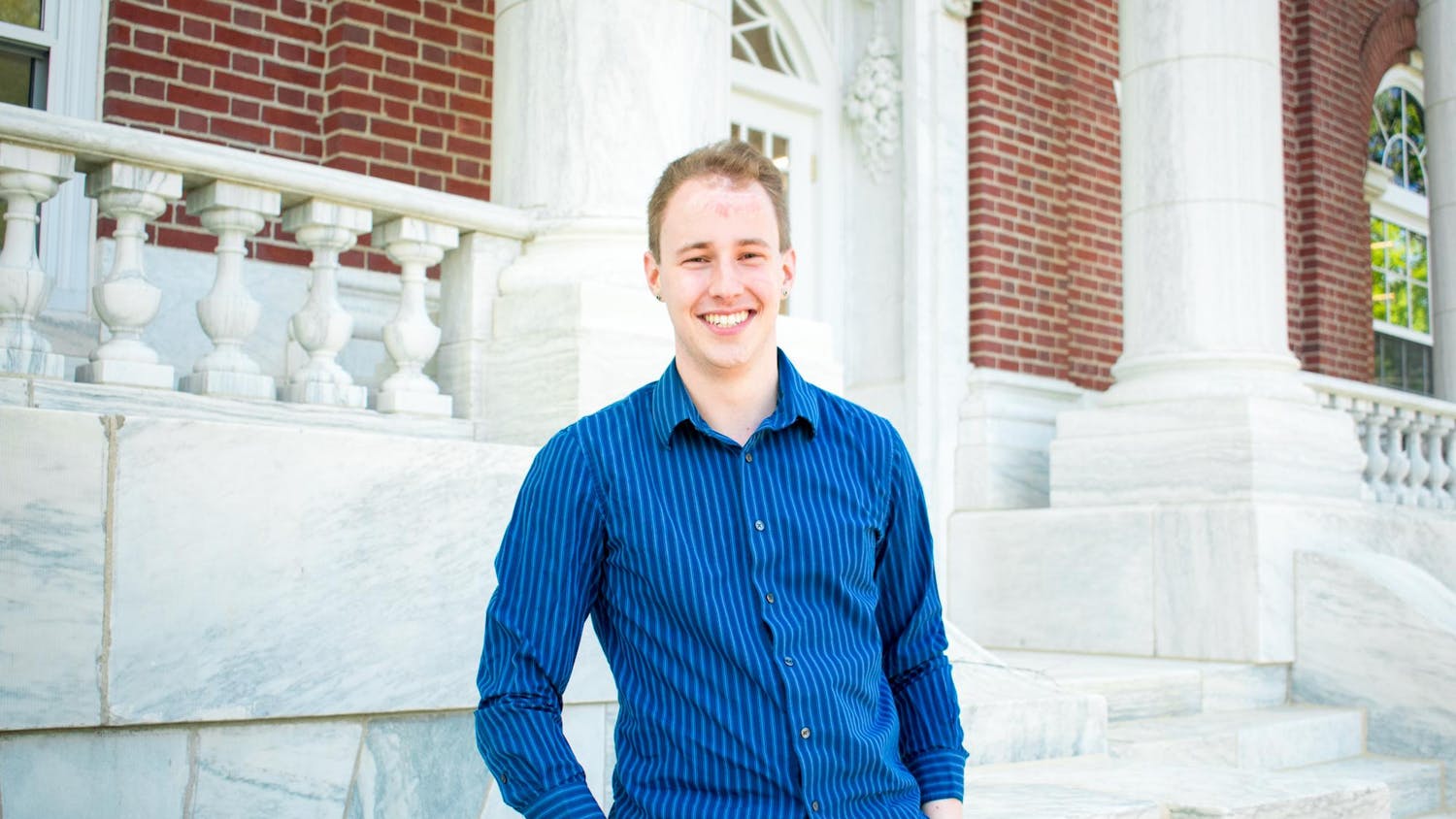In museum exhibitions of contemporary art, a complex conceptual thesis can often take precedence over more basic viewing concerns, like the aesthetic arrangement of works or the overall accessibility of the show to the viewing public. This fall, the Institute of Contemporary Art/Boston (ICA) defies this convention with a new exhibition. Simply put, the ICA’s “Fiber: Sculpture 1960-Present,” is beautiful. Tightly curated and tastefully displayed, the show features approximately 50 fiber-based creations made by 34 artists who have stretched the bounds of the medium over the last half-century. In terms of purpose, the exhibition’s agenda is clear and simple: to bring attention to an often overlooked legacy of art-making and to advocate for fiber art’s status as a “fine art” akin to painting and sculpture.
The exhibition begins with works from the early 1960s, a time when the art community debated the legitimacy of fiber sculpture as a medium -- was it suited exclusively for decorative purposes, or could it be considered fine art? As if in answer to these questions, fiber sculptors began to experiment. They manipulated the material into forms that defied gravity and existed in three-dimensional space, trends which have progressed with the art form through decades of development.
In the first gallery, two works by American artist Lenore Tawney -- “Dark River,” a black linen and wool weaving from 1961, and “Black Woven Form (Fountain),” a linen and metal weaving from 1966 -- hang vertically from the ceiling, representing a radical innovation in fiber art’s orientation in space. Across from Tawney’s looming black forms is Kay Sekimachi’s “Kunoyuki,” a 1968 hanging composed of white, nearly translucent nylon monofilament that has been delicately manipulated into a rounded, jellyfish-like form using a traditional twelve-harness loom. Sekimachi’s ethereal, fragile creation subtly counterbalances Tawney’s more rugged installations, though both artists’ works initiate an enduring theme of the exhibition: the expansion of the artistic possibilities of fibrous material.
The second gallery of the exhibition is brimming with color, exploring the ways in which fiber artists use their medium to realize hues in three dimensions. The eye is immediately attracted to Swiss artist Elsi Giauque’s 1979 work, “Élément spatial (Spatial Element),” an installation of brightly tinted transparent weavings suspended from the ceiling and arranged in identical square forms that create dynamic optical effects. As viewers circulate around the work, colors fuse and shapes coalesce. While Giauque’s piece may draw the most initial attention, Naomi Kobayashi’s poetic cotton construction from 1980, “Ito wa Ito,” leaves a lasting impact with its quiet, formalist beauty. Known for creating sculptural “songs” with three-dimensional forms and color, Kobayashi combined several strands of bright red cotton thread to create a thick, undulating relief in the shape of a line, which balances formal contrasts -- horizontal and vertical, soft and solid, straight and curved and, above all, yin and yang.
The exhibition also includes a gallery dedicated to the theme of “Fiber and Gravity,” which elaborates upon the sculptural possibilities of fiber introduced in the first room. While every sculpture in this section is visually loud and attention-grabbing, Sheila Hicks’ “Pillar of Inquiry/Supple Column,” completed earlier this year, manages to dominate the space. Floor-to-ceiling in height, Hicks’ work is monumental in scale and composed of colorful acrylic, linen, cotton and bamboo that seem to gush out of the ceiling in a rainbow of Silly String. When comparing Hicks’ colossal piece to the more delicate work of fiber artists from the 1960s, it is clear how far the medium has progressed in terms of scale over the last 50 years.
The final portion of the exhibition carries the theme of feminism, showcasing the various ways in which artists imbued their fibrous medium, traditionally associated with femininity and domesticity, with claims for gender equality. The highlight of this section is undoubtedly Faith Wilding’s “Crocheted Environment” from 1972, an installation that fills the entirety of a room with a web of acrylic yarn and sisal rope, simultaneously representing the comfort of a home and the danger of a spider web. It is in this section, however, that the show’s visual cohesiveness begins to falter for the first time; the space feels visually overcrowded, and the exhibition becomes increasingly radical both aesthetically and conceptually. Taken together, these elements begin to overwhelm visitors.
Luckily the exhibition ends here, and the drop in quality in the final portion does not overshadow the overall success of the show. “Fiber: Sculpture 1960-Present” does exactly what it sets out to do: bring attention to a lesser known legacy of contemporary art-making and legitimize its equal status to painting and sculpture. The show embodies yet another crucial message, however, and one that is even more fundamental to today’s art world; in merging a clear conceptual argument with visually stunning works of art, “Fiber” shows that contemporary art exhibitions can be intellectually rigorous yet still maintain an aesthetic beauty and, most importantly, be accessible and satisfying to the viewing public.
"Fiber" will be open for visitors until Jan. 4, 2015.
ICA's new exhibition provides interesting look at underappreciated medium

Sheila Hicks' work immediately draws the eye, dominating the space visually.





